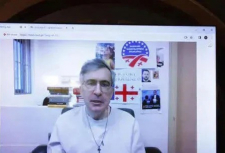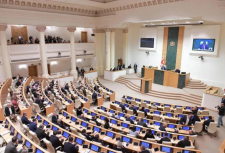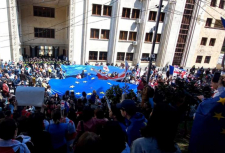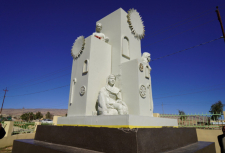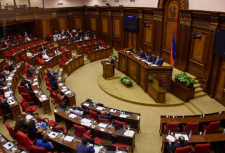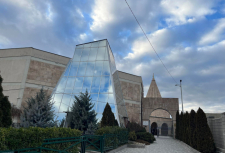Some Yazidi national holidays and ceremonies
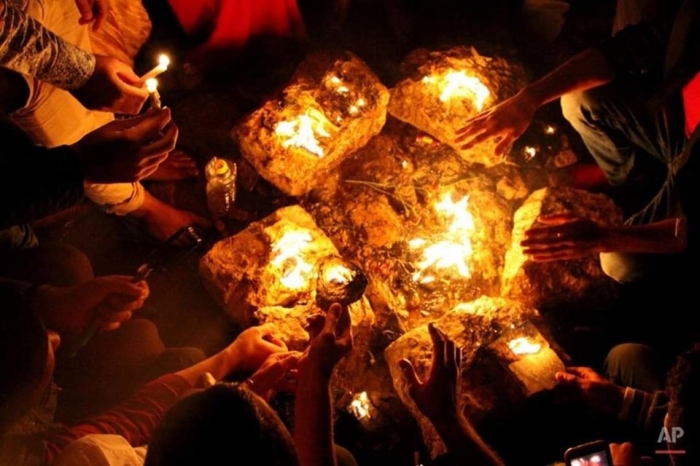
Holidays and rituals are an integral part of the national culture of the Yazidis. They are mainly associated with the economic activities of the Yazidis, who traditionally were skilled pastoralists and diligent farmers.
Like many peoples of the East, the great holidays of the Yazidis are timed to the new periods of the year, which begins on March 21. This holiday is Navruz (New year). It was preceded by less significant, but traditionally national holidays, which were considered by the Yazidis as the new year. Such predecessors of Nowruz is the holiday of Khidir Nabi and note only Yazidi Kurds the feast of the dedication "EIDE sersale" .
The holiday of Khidyr-Nabi, the patron Saint of livestock and vegetation, embodying eternal life and spring, is arranged between the Christmas and great lent, observed by Christians. Yazidis fast for three days. In the evening of the third day and the next morning from each house carry food to neighbors in memory of the dead. Yazidi liquid dough draw on the lintel and ceiling beams magical signs-charms: Yazidi Kurds depict discs of the sun, the moon, as well as figures of men, cattle, circles and dots. All these signs are called grace Khidir-Nabi and ensure the welfare of the home and abundant offspring. The Yazidis performed at this time the rite of "Doli-Dang". Children and young people, taking a bag (or a new woolen sock) on a long thread (called "Doli-Dang"), go home with songs. Children certainly give fruits and sweets.
Songs are a favorite kind of folk art among the Yazidis. They are passed down from generation to generation, acquiring new content. The most common mass songs, but performed solo. Music and songs are accompanied by folk Yazidi dances, mainly round dances.
On the night of the holiday Khidyr-Nabi put flour in a wooden trough and put in the middle of the room. It is believed that the horse khidyr-Nabi leaves its traces on the flour; the owner of the house rejoices and says:"The Blessing and mercy of the prophet Khidyr has now descended to my house."
The new year was not without a plentiful feast. Yazidis like to fry a shish kebab. Its preparation is carried out as usual by men, usually the owner of the house or his eldest sons. Common sweet rice. Cook wheat, called Savar, flavoring it with honey. A lot of cooking pastry.
Yazidis-farmers had rituals associated with water. They were performed by women. In order to propitiate the sky in times of drought, they harnessed oxen to the plow and plowed not the land but the water. For the same purpose, on dry days, the women poured water on each other.
New summer agricultural cycle was started from the Yazidi herdsmen with the herds to summer. By this time the holiday was timed, when lambs were mixed with mothers. Before arriving in the summer the lambs were fed freely to mothers and calves were not allowed to suck milk and they wore muzzles. Such customs associated with the transition to the summer, also occur in the everyday life of other peoples, pastoralists.
In the fall of Yazidis (the rural population) to spend the Holiday Beran-Berdan (literally "running sheep"), meaning the custom of running sheep in the herd. When it is mid-autumn (September-October), Yazidis bake bread, qadu (sweet biscuits with a layer of butter and sugar) and carry them to the flocks.
There they distribute to all present qady, eat themselves and have fun. Then let the sheep in the herd. Mating was always accompanied by ritual actions and took place on the 40th day, that is, the first decade of October so that the cattle occurred in the early spring pasture period. But ensuring the reproduction of the herd for the next year began in the winter, in the most difficult period for pastoralists.
100 days after start of sheep in the herd of the Kurds pastoralists when making sure that the sheep will have a litter, celebrate the Garden-pez.
The houses are once again preparing the Ghats and various dishes. People are having fun, rejoicing that soon the herd will increase. The Kurds-Yazidis during this holiday go mummers: usually two men. One of them, dressed in a ludicrous outfit, featuring a comic character of Koshgeldy. The second, dressed in a woman's dress, depicts his wife. They walk around the village, go into the house, joking, joking, collecting in a bag generously distributed treats and money.
Last Wednesday of the month shubat Yazidis is called the feast of the ahyr-Corsham-be (black Wednesday). On this day, have fun and try not to quarrel with anyone. Everyone cooks a lot of food: it is believed that the whole year everyone will do the same thing that he did that day. On holidays, everyone will certainly cook halisa (a dish made from whole grains of wheat, chicken meat and ghee). In these days, if two were in a quarrel or feuding, be sure to make up and start talking to each other. For three days they visit each other and make gifts.
In winter, the most "fabulous" time, the rural population gathered in the evenings in someone's house, in a large room — living room (ode). - Competed dengbej singers; invited and musicians. The party was attended by all the unmarried young people of the village — girls and boys, young women. Played the saz, sang, danced in a round dance until the morning. They told fairy tales. Yazidis used to tell them in the evenings. None of the storytellers agreed to tell a fairy tale during the day. In the past each village had its own professional storytellers and Dongbei.
In winter, cows spend your holiday let's go-Go. Annually in December (Gregorian calendar), Yazidis observe a three day fast (faces go). They ate nothing during the day. At midnight on the eve of lent prepared dinner, ate enough and went to bed. The next day we did not eat, drink or smoke until sunset. After sunset they ate, went to bed, and got up again at midnight. This went on for three days. On the fourth day staged a holiday-Aida-Go. On this day in the streets of the village were going to the elderly in groups of a few people, went to the homes of villagers, visiting first those who have recently somebody died. There they were treated.
Tags: #yazidisinfo #yazidi #ezidi
Some Yazidi national holidays and ceremonies

Holidays and rituals are an integral part of the national culture of the Yazidis. They are mainly associated with the economic activities of the Yazidis, who traditionally were skilled pastoralists and diligent farmers.
Like many peoples of the East, the great holidays of the Yazidis are timed to the new periods of the year, which begins on March 21. This holiday is Navruz (New year). It was preceded by less significant, but traditionally national holidays, which were considered by the Yazidis as the new year. Such predecessors of Nowruz is the holiday of Khidir Nabi and note only Yazidi Kurds the feast of the dedication "EIDE sersale" .
The holiday of Khidyr-Nabi, the patron Saint of livestock and vegetation, embodying eternal life and spring, is arranged between the Christmas and great lent, observed by Christians. Yazidis fast for three days. In the evening of the third day and the next morning from each house carry food to neighbors in memory of the dead. Yazidi liquid dough draw on the lintel and ceiling beams magical signs-charms: Yazidi Kurds depict discs of the sun, the moon, as well as figures of men, cattle, circles and dots. All these signs are called grace Khidir-Nabi and ensure the welfare of the home and abundant offspring. The Yazidis performed at this time the rite of "Doli-Dang". Children and young people, taking a bag (or a new woolen sock) on a long thread (called "Doli-Dang"), go home with songs. Children certainly give fruits and sweets.
Songs are a favorite kind of folk art among the Yazidis. They are passed down from generation to generation, acquiring new content. The most common mass songs, but performed solo. Music and songs are accompanied by folk Yazidi dances, mainly round dances.
On the night of the holiday Khidyr-Nabi put flour in a wooden trough and put in the middle of the room. It is believed that the horse khidyr-Nabi leaves its traces on the flour; the owner of the house rejoices and says:"The Blessing and mercy of the prophet Khidyr has now descended to my house."
The new year was not without a plentiful feast. Yazidis like to fry a shish kebab. Its preparation is carried out as usual by men, usually the owner of the house or his eldest sons. Common sweet rice. Cook wheat, called Savar, flavoring it with honey. A lot of cooking pastry.
Yazidis-farmers had rituals associated with water. They were performed by women. In order to propitiate the sky in times of drought, they harnessed oxen to the plow and plowed not the land but the water. For the same purpose, on dry days, the women poured water on each other.
New summer agricultural cycle was started from the Yazidi herdsmen with the herds to summer. By this time the holiday was timed, when lambs were mixed with mothers. Before arriving in the summer the lambs were fed freely to mothers and calves were not allowed to suck milk and they wore muzzles. Such customs associated with the transition to the summer, also occur in the everyday life of other peoples, pastoralists.
In the fall of Yazidis (the rural population) to spend the Holiday Beran-Berdan (literally "running sheep"), meaning the custom of running sheep in the herd. When it is mid-autumn (September-October), Yazidis bake bread, qadu (sweet biscuits with a layer of butter and sugar) and carry them to the flocks.
There they distribute to all present qady, eat themselves and have fun. Then let the sheep in the herd. Mating was always accompanied by ritual actions and took place on the 40th day, that is, the first decade of October so that the cattle occurred in the early spring pasture period. But ensuring the reproduction of the herd for the next year began in the winter, in the most difficult period for pastoralists.
100 days after start of sheep in the herd of the Kurds pastoralists when making sure that the sheep will have a litter, celebrate the Garden-pez.
The houses are once again preparing the Ghats and various dishes. People are having fun, rejoicing that soon the herd will increase. The Kurds-Yazidis during this holiday go mummers: usually two men. One of them, dressed in a ludicrous outfit, featuring a comic character of Koshgeldy. The second, dressed in a woman's dress, depicts his wife. They walk around the village, go into the house, joking, joking, collecting in a bag generously distributed treats and money.
Last Wednesday of the month shubat Yazidis is called the feast of the ahyr-Corsham-be (black Wednesday). On this day, have fun and try not to quarrel with anyone. Everyone cooks a lot of food: it is believed that the whole year everyone will do the same thing that he did that day. On holidays, everyone will certainly cook halisa (a dish made from whole grains of wheat, chicken meat and ghee). In these days, if two were in a quarrel or feuding, be sure to make up and start talking to each other. For three days they visit each other and make gifts.
In winter, the most "fabulous" time, the rural population gathered in the evenings in someone's house, in a large room — living room (ode). - Competed dengbej singers; invited and musicians. The party was attended by all the unmarried young people of the village — girls and boys, young women. Played the saz, sang, danced in a round dance until the morning. They told fairy tales. Yazidis used to tell them in the evenings. None of the storytellers agreed to tell a fairy tale during the day. In the past each village had its own professional storytellers and Dongbei.
In winter, cows spend your holiday let's go-Go. Annually in December (Gregorian calendar), Yazidis observe a three day fast (faces go). They ate nothing during the day. At midnight on the eve of lent prepared dinner, ate enough and went to bed. The next day we did not eat, drink or smoke until sunset. After sunset they ate, went to bed, and got up again at midnight. This went on for three days. On the fourth day staged a holiday-Aida-Go. On this day in the streets of the village were going to the elderly in groups of a few people, went to the homes of villagers, visiting first those who have recently somebody died. There they were treated.
Tags: #yazidisinfo #yazidi #ezidi
